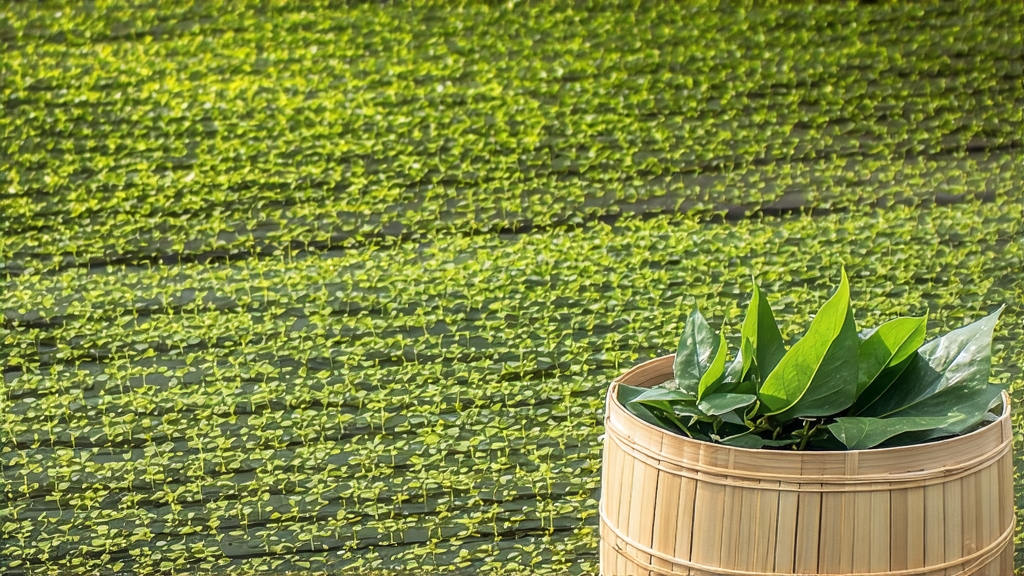
Longjing, literally “Dragon-Well,” is not merely a tea; it is a living scroll of Chinese history, geography, and sensibility rolled into one delicate leaf. To the uninitiated it may look like any other flat green spear, yet once the hot water kisses those blades they unfold into a miniature landscape of Hangzhou’s West Lake, releasing a fragrance that poets once compared to “an orchid breathing through jade.” This essay invites the international reader to walk the stone paths of Meijiawu village, to hear the metallic song of the wok, and to taste the sweet, chestnut-soft umami that has seduced emperors, diplomats, and now, perhaps, you.
-
A Leaf Crowned by Emperors
Legend places Longjing’s birth in the Song dynasty (10th–13th c.), but textual praise solidified during the Qing. The Qianlong Emperor, while visiting the Hugong Temple beside West Lake, watched local women plucking tea in front of the Dragon-Well spring. So enamored was he that he tucked a handful of leaves into his sleeve and returned to Beijing, decreeing the 18 bushes he had personally witnessed as “Imperial Tea Trees.” Those 18 bushes still stand, fenced yet leafy, a botanical monument that sells for more than its weight in gold each spring. Thus Longjing became the first Chinese tea to enjoy legal terroir protection—two centuries before the French coined “appellation contrôlée.” -
Micro-Terroirs within West Lake
Western wine lovers understand “single vineyard”; Longjing offers “single slope.” The core zone, Xihu District, is subdivided into five micro-terroirs: Shífeng (Lion Peak), Méijiāwū, Wēngjiāshān, Hǔpáo (Tiger-Running), and Lóngjǐng Village itself. Shífeng yields the most sought-after leaves: grown on purple sandstone at 300 m, the vines absorb mineral notes that translate into a flinty, almost gun-smoke finish. Méijiāwū, protected from northern winds by phoenix-shaped hills, produces a gentler, bean-sweet cup. Beyond these 168 km², the leaf may still be called “Longjing-style,” but connoisseurs taste the difference the way Burgundians spot a village wine from grand cru. -
Cultivars: Beyond the Iconic Longjing #43
While the name “Longjing” is tied to place, the plant itself matters. The traditional quntizhong (heirloom bush) delivers complex aromatics but modest yield. In 1970s agronomists released Longjing #43, a clonal selection prized for early budding, uniform emerald color, and high amino acids—hence stronger sweetness. More recently the Zhejiang Agricultural Academy introduced Zhongcha 108, frost-resistant and even earlier, yet some old farmers insist it lacks the “orchid after-breath.” A new wave of heritage guardians is therefore grafting ancient quntizhong cuttings onto younger rootstock, attempting to marry authenticity with vigor. -
The Invisible Choreography of Plucking
Timing is ruthless. Pre-Qingming leaves—picked before the 5th of April—carry the softest down and the highest L-theanine, commanding prices above 2000 USD per 500 g. Pickers work by the “two-leaf-and-a-bud” rule, but the true secret lies in finger pressure: a snap, not a pull, to keep the stem’s cell walls closed, slowing oxidation before the wok. Experienced hands can harvest 1 kg of fresh leaf in four hours; 4 kg are needed for 1 kg finished tea. Thus every cup is the condensation of sixteen hours of human focus. -
Pan-Firing: A Tea-Master’s Ballet
Unlike Japanese greens that are steamed, Longjing is deactivated in a hot wok, a technique called shaqing (killing-green). The wok is seasoned with tea-seed oil until its surface gleams like obsidian. At 180 °C the master tosses in 250 g of leaf, his bare hands sensing the slightest wilt. In ten minutes the temperature drops in a controlled arc to 80 °C, while the gestures evolve: “grasp, shake, pat, rub, press.” The final pressing against the wok wall gives Longjing its signature flat sword shape, yet the